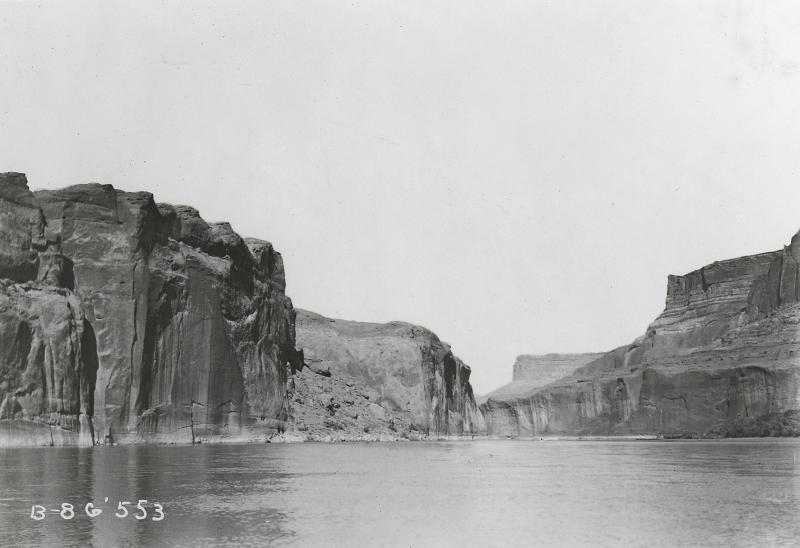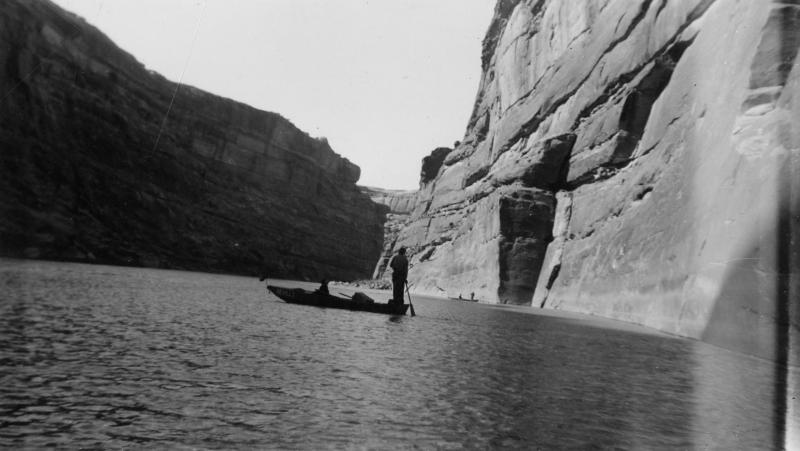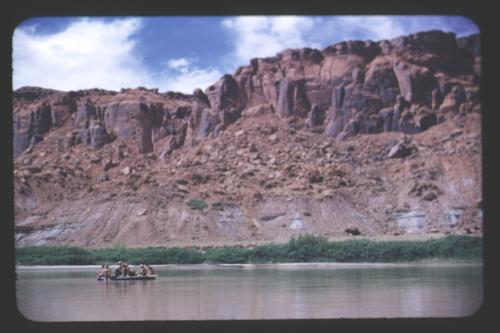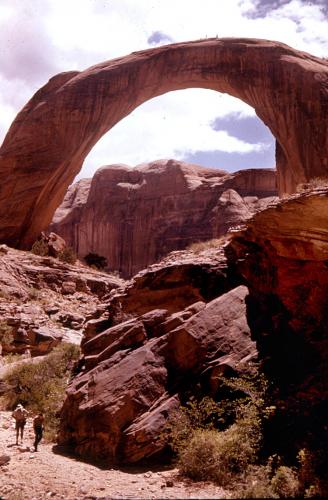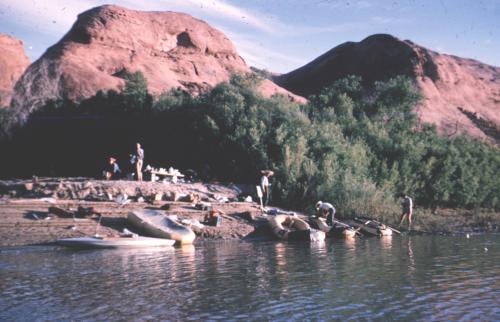Beginnings of a river tourist industry
Julius Stone, head of a company associated with Stanton’s dredging plan, visited Glen Canyon and became enchanted with the peace of the region. He contracted with a local trapper and river man, Nathaniel Galloway, to build river-worthy boats and take Stone on the first trip through the canyon solely for recreational purposes.
Others visited Glen Canyon over the next few decades to take in the beauty of a wilderness landscape. The young vagabond poet and artist Everett Reuss disappeared in this region in 1934. River-based touring got a major boost when Norman Nevills, son of an oil prospector based at Mexican Hat on the San Juan River, constructed a new model of boat suitable for running rapids. In 1938, he offered his first commercial trip, from Green River, Utah, through Cataract, Glen, and Grand Canyons to Lake Mead. Customers in upcoming years included Wallace Stegner and Barry Goldwater. The Nevills operation, based in Mexican Hat, outlived his untimely death in 1949 and continues today as Mexican Hat Expeditions.
Other river-running operations began as well, and by the 1950s, several rafting and boating trips would occur each year. Among the regular customers were groups such as the YMCA and the South Cottonwood Ward of Salt Lake County (“SOCOTWA”), which provided adventure activities for young people. These outings often included hikes from the river bottom up side canyons to view the surrounding country, such as the six-mile trek to Rainbow Bridge.
But those making a living in Glen Canyon, and their growing tourist base, were aware that the days of enjoying this stretch of river might be numbered.

